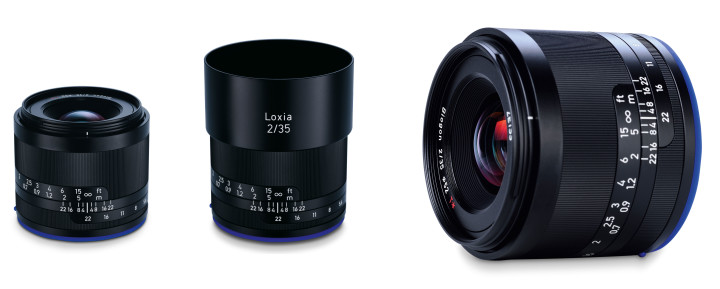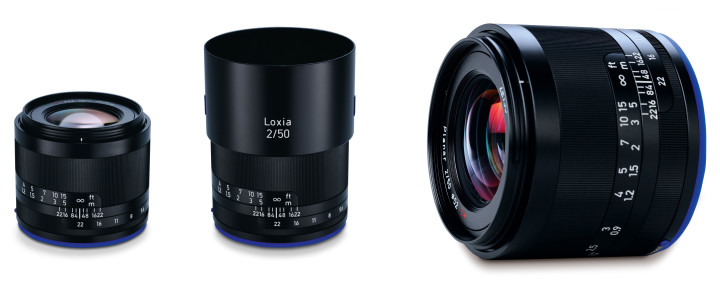There is some exciting news on the Zeiss front today: the company has announced a new family of manual focus lenses built especially for Sony’s full-frame A7/A7r/A7s cameras. The name of this new line is Loxia and the lenses have been designed to suit both stills and video work. The first two lenses that have been announced are the 35mm f/2 and the 50mm f/2.
The ZEISS Loxia 2/35 and Loxia 2/50 are the first members of a new family of manual focus lenses for the Sony E-mount full-frame system. While designed for full-frame, they will work just as well on the E-mount APS-C system (Sony Nex, a5000, a6000) with just a 1.5x crop factor to consider.
The lenses have been designed to deliver optimal performance on digital sensors. To enhance user experience, their aperture can be controlled electronically from the camera dial. Lens data (EXIF) is transmitted, but it also recognizes focus movements and, if enabled, can activate the camera’s focus magnifier assist like the Sony FE lenses. This makes the Loxia lenses fully compatible with modern compact camera features and electronic viewfinders.

The lenses also feature a manual aperture ring that has a mechanical deactivation of the click stop (de-click). Videographers and filmmakers will appreciate this feature as they prefer to work without the click-stop to slightly vary their aperture. That being said, I am curious to test the smoothness of this aperture ring as a de-click ring can be trickier for still photography. The aperture could inadvertently change with the slightest touch of the ring. This is one of the weak points of the Fuji X lenses for example even though they already feature a mechanical click stop. Either way, I’ll reserve my judgement until I’ve tried them at Photokina 2104.

Knowing the build quality of Zeiss lenses, I can only expect the best from these new lenses. The focus ring is guaranteed to be smooth for precise focus operation. It has a large focus rotation angle of approximately 180 degrees which will suit fine adjustments in video shooting. The barrel is made entirely of metal. The lenses also have a special weather sealing at the lens mount to prevent water from getting between the camera and the lens.
The optical design of the Loxia 35mm f/2 is based on the Biogon. It features nine lens elements in six groups. The minimal focus distance is 0.3 meters (the 35mm FE f/2.8 is 0.35 meters).
The Loxia 50mm f/2 inherits its optical design from the Planar and features six lens elements in four groups. The minimum working distance is 0.37 meters which is better than the 55mm FE f/1.8 (0.5 meters).
Rumours of these lenses had been around since last month. Being a new family of lenses, there will certainly be more to come and I am sure we will see some traditional wide-angle Zeiss lenses such as a 15mm or 18mm Distagon and a 21/25mm Biogon.
In keeping with Zeiss tradition, these lenses will certainly produce great results but I really wish that the company had decided to release different focal lengths to start with.
While these lenses have an E-mount and can work on all Nex and recent a5000 and a6000 models, they are primarily intended for the full frame E-mount, which limits their usability to three cameras that already have these focal lengths covered with two excellent lenses. Why not release a wide-angle lens or a portrait lens? I am sure that many A7/A7r/a7s users would have jumped on them.
This also raises a second question: will these two Loxia lenses be a worthy replacement for the 35mm FE or the 55mm FE, two very good lenses? The 35mm has a one-stop advantage and both Loxias have a hyperfofcal scale on the lens. As for the performance, we’ll have to wait and see the real difference.
Are you excited about the new Zeiss Loxia family? Tell us what you think in the comments section below!
You can also check out more image samples on on Christian Dandyk and Zeiss’s official Flick pages.
